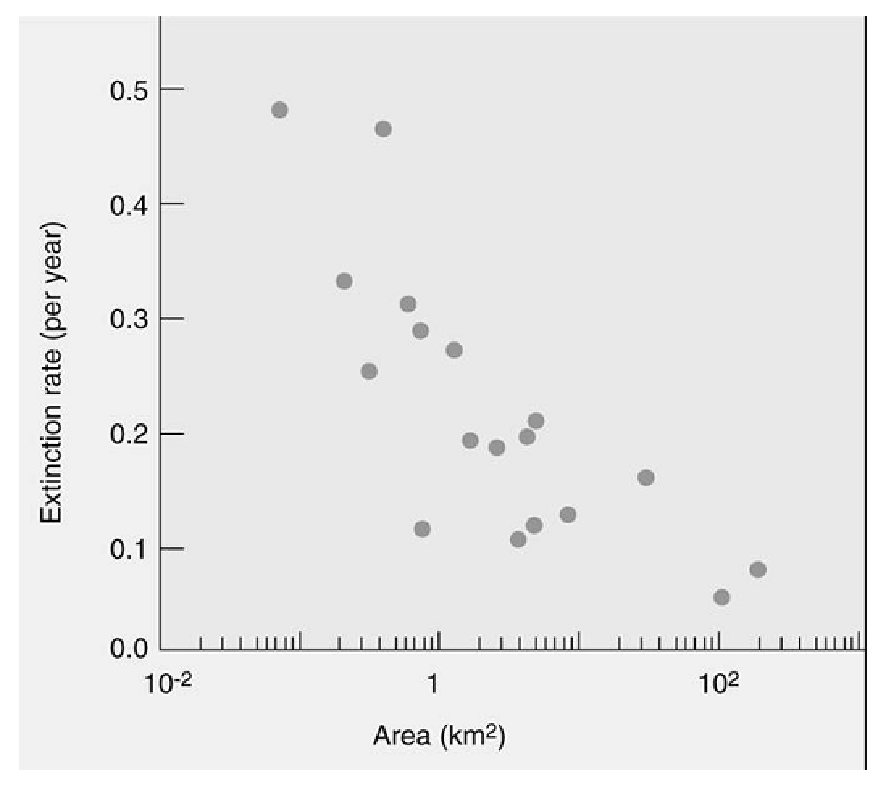Alkaline phosphatase is an enzyme used in ________ tests.
A. ELISA
B. indirect fluorescent antibody
C. Western blot
D. direct fluorescent antibody
Answer: A
You might also like to view...
The following graph shows the relationship between extinction and habitat area. Which statements help explain the trend shown on the graph? Check all that apply.

_____ Larger patches are more likely to be encountered by new immigrants.
_____ Larger patches are likely to have a more uniform habitat.
_____ Larger patch size reduces genetic drift.
_____ Larger patches are more geographically isolated than smaller patches.
_____ Species richness is higher on larger patches.
Additional:
Clarify Question
· What is the key concept addressed by the question?
Gather Content
· What do you already know about habitat area and extinction?
Choose Answer
· Given what you now know, what information and/or problem solving approach is most likely to produce the correct answer?
Reflect on Process
· Did your problem-solving process lead you to the correct answer? If not, where did the process break down or lead you astray? How can you revise your approach to produce a more desirable result?
An appendage that is an extension of the bacterial cell wall and plasma membrane is a(n) ________.
A. pilus B. prostheca C. mycelium D. flagellum
Conservation biologists are often concerned that when the population size of an endangered species becomes too small, it is at risk of extinction for which reason?
A. They are at risk of sympatric isolation. B. They can no longer evolve. C. They may be more susceptible to changes in the environment or disease. D. They are at risk of developing prezygotic barriers to reproduction. E. Their rate of breeding will decline.
In the simplified prairie food chain illustrated in the pictures below, the letter D represents ____
a. tertiary consumer b. secondary consumers c. first trophic level d. primary consumers e. third trophic level